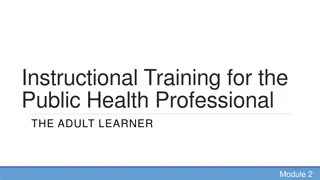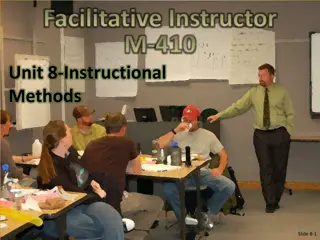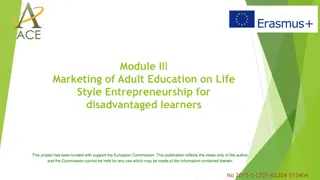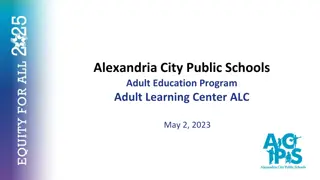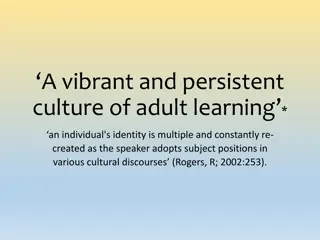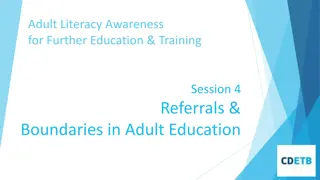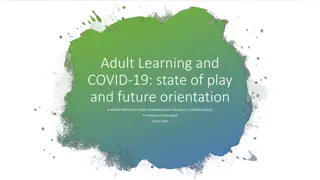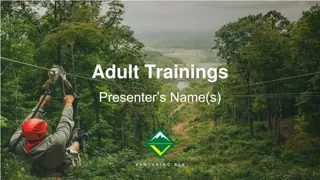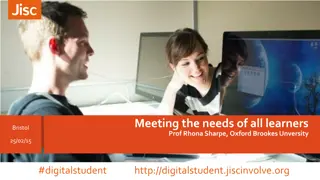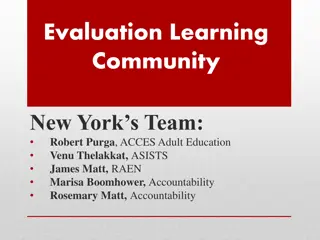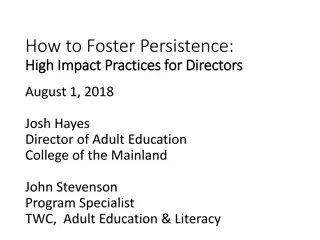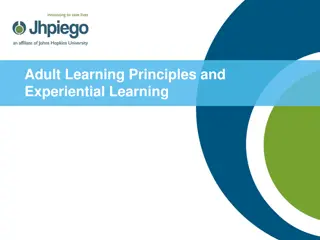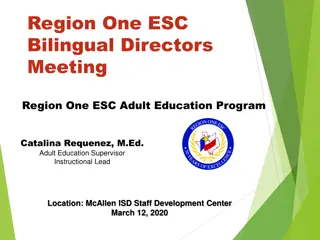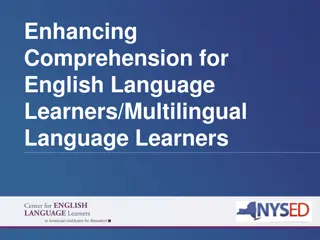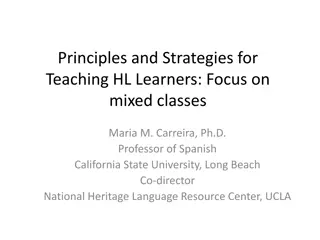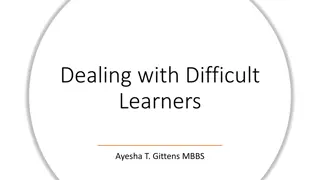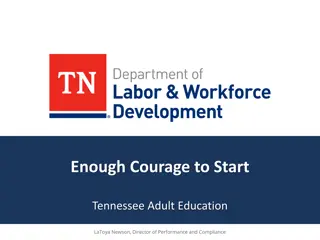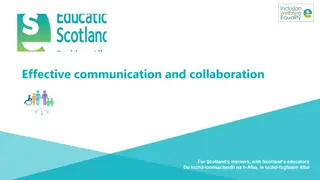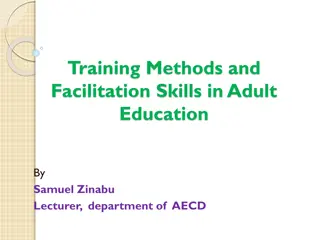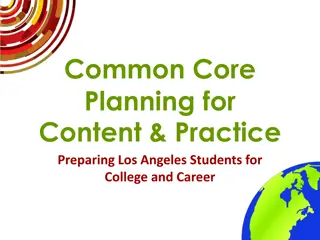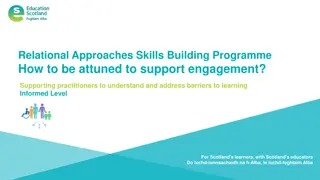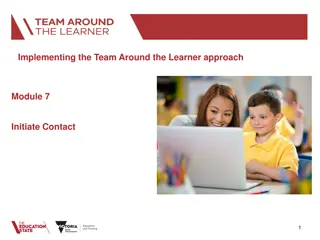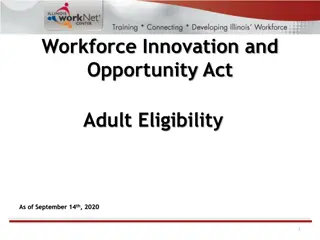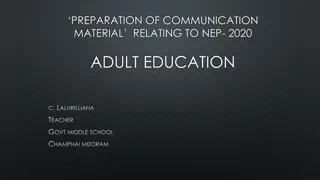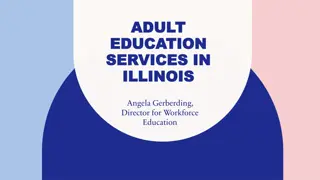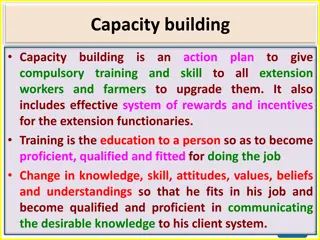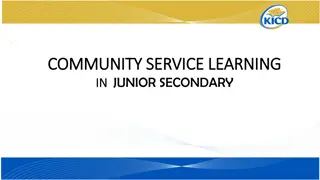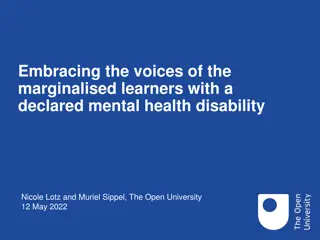Effective Training Methods for Adult Learners
Explore the essentials of conducting effective training sessions, from understanding adult learning principles to engaging participants. Key points include knowing your audience, using adult learning principles, and effective communication strategies. Gain insights on common characteristics of outstanding and worst teachers, and learn practical tips to optimize your training approach.
Download Presentation

Please find below an Image/Link to download the presentation.
The content on the website is provided AS IS for your information and personal use only. It may not be sold, licensed, or shared on other websites without obtaining consent from the author. Download presentation by click this link. If you encounter any issues during the download, it is possible that the publisher has removed the file from their server.
E N D
Presentation Transcript
OVERVIEW OF CONDUCTING EFFECTIVE TRAINING 1 TRAINING BASICS
OBJECTIVES Participants will be able to- Apply basic principles of adult learning to training Use training methods discussed in the workshop to facilitate a training session Facilitating a workshop session Provide feedback to fellow TOT participants 2
KEY POINTS TO REMEMBER DURING TRAINING You already know a lot about training and health You have much to share with others Ask questions throughout this workshop We are here to help you learn how to be an effective trainer 3
COMMON CHARACTERISTICS Outstanding Teachers Worst Teachers Cooperative Considerate Patient Pleasant Fair, Impartial Sense of humor Good disposition Interest in students Knowledge of subject Never smiles Sarcastic Quick tempered Explanations not clear Partial; has favorites Picks on some Superior and aloof Over-bearing Not friendly 4
TRAINING BASICS Know Your Audience Use Adult Learning Principles Be Prepared to Train Manage the Training Communicate Effectively Engage the Participants 5
KNOW YOUR AUDIENCE 6
WHY KNOW YOUR AUDIENCE? Knowing Your Audience Helps You With Choose the right participants for the training Design your training to meet their needs Omit unnecessary content 7
WHAT YOU NEED TO KNOW ABOUT YOUR AUDIENCE Experience Skills Attitude Age, Sex Knowledge Job/Position Education Responsibilities Training Needed 8
GET TO KNOW COURSE PARTICIPANTS Use a get-to-know-you exercise Ask participants to share their expectations of the course Talk with them before the training starts, during breaks, etc. 9
USE ADULT LEARNING PRINCIPLES 10
TRAINING ADULTS Understanding adult learning principles helps you use the right training techniques to enhance learning. Adults learn differently from children and require different training approaches. 11
ATTENDEES LEARN BEST Under low to moderate stress; if stress is too high, it becomes a barrier to learning. Adults are motivated by information or tasks that they find meaningful. Listen to what they want and need, and be flexible in your planning. Change your approach if your methods are not working. Adults bring a great deal of experience and knowledge to any learning situation. Safe to ask questions. Confident that they will be respected. 12
KNOW WHAT YOU ARE TRAINING! Even the best training skills cannot hide the fact that a trainer does not know the content. Review course material several weeks before the training Know the training goals, objectives and all activities 14
USE EFFECTIVE ORGANIZATIONAL SKILLS Follow a plan (stick to an agenda) Organize training logically Use Checklist (before & during the training) Keep everyone informed 15
PREPARE THE TRAINING ROOM Check room before the training day (if possible) Make sure the materials, supplies, and equipment are available Arrange training room to allow for the best learning situation Arrive at least an hour early on the training day 16
HAVE A BACK-UP PLAN Be prepared for any and all problems by having a back-up plan Have extra supplies and materials Use multiple formats (handouts, slides, overhead transparencies) Be flexible Make positive situations out of negative ones 17
PRACTICE YOUR PRESENTATIONS Practice out loud in front of a mirror or with a colleague Rehearse in the training room, if possible TIME your presentation 18
MANAGE THE TRAINING As the facilitator, you are the manager of the training course. Time Participants Logistics (locations and unexpected situations) You are responsible for creating a training that successfully meets the goals and objectives. 20
DIFFICULT PARTICIPANTS Listen here. Blah, blah, bla, bla. Interrupts others Dominates the conversation You don t know. I am not saying a word. Is a know-it-all Does not participate 21
WAYS TO MANAGE DIFFICULT PARTICIPANTS Maintain control Use verbal cues Use body language Refer to the Ground Rules Use the Parking Lot Give the person a specific task Talk to the person outside the classroom Never loose your cool or be rude 22
COMMUNICATE EFFECTIVELY 23
USE YOUR VOICE This is the most important communication tool Set the tone of the training Convey most of the training content Show enthusiasm Encourage participation Provide positive reinforcement 24
USE YOUR VOICE (CONTD) Use your trainer s voice Project your voice so everyone can hear you Vary your pitch Use comfortable and varied pace Speak at the audience s technical level Use a friendly tone Use a microphone if necessary 25
OBSERVE & LISTEN Observe participants Use listening skills Listen to what participants are saying Do they understand? Are there concerns? What are the needs of the participants? Use silence to manage the training Are participants engaged Do participants understand What is the energy level? Are there group dynamics? Who is not participating? 26
ENGAGE THE PARTICIPANTS Create participatory learning situations Use a variety of presentation styles, media, exercises, and activities to keep interest Change the pace and/or activity every 30 minutes Change location of seating arrangements 28
ENGAGE THE PARTICIPANTS (CONT D) Use examples that participants can relate to their jobs/situations Use humor (where appropriate) Use questions during your presentations 29
USE QUESTIONS TO ENGAGE THE PARTICIPANTS Encourage participants to contribute and share knowledge and experiences Allow for differences of opinion Keep participants alert 30
USE QUESTIONS TO DETERMINE PARTICIPANTS KNOWLEDGE AND UNDERSTANDING Ask participants to Explain complex issues Describe how they would apply the information to their jobs Repeat key content during the reviews 31
3 TYPES OF QUESTIONS Close Ended Open Ended Probing Generate short answers (yes or no), do not encourage discussion limit what participant says Descriptive answers to encourage discussion Encourage participation and sharing of knowledge Generate additional discussion Encourage participants to go into further detail 32
WHEN PARTICIPANTS DO NOT RESPOND Maintain a deliberate silence Repeat or rephrase the question Use body language/eye contact Encourage answers Give an example Answer the question yourself 33
SANDWICH FEEDBACK TECHNIQUE A feedback sandwich consists of criticism sandwiched between two positive comments, as follows: A specific positive comment. Critique and/or suggestion for improvement. Overall positive comment. 35
COMMON MISTAKES Praise Praise Criticism Criticism Praise Praise Praise is trivial or just-for-sake and serves no function Praise is substantial and obscures the criticism 36
COMMON MISTAKE (CONTD.) Praise Criticism Praise Employees get tuned in to the praise- criticism-praise pattern 37
KEY POINTS FOR FACILITATING A TRAINING Be prepared! Practice before you train Know the material and how it is structured Use organizational skills to keep the training on task in the allotted time Demonstrate effective communication skills teach by example! Use the skills you are trying to teach 38
LEARNING AND TEACHING CREDO What I hear, I forget. What I hear and see, I remember a little. What I hear, see and discuss, I begin to understand. What I hear, see, discuss and do, I acquire knowledge and skill. What I teach to another, I master. 39


